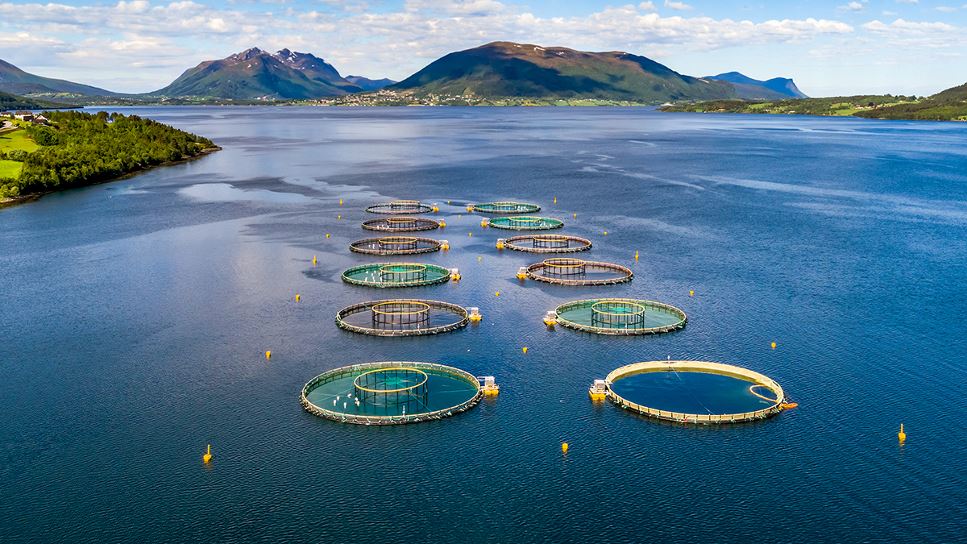Some agricultural production systems rely on soil to farm plants for food. There’s also farming that involves raising land animals for food. But have you heard of aquaculture? Although it is sometimes referred to as “farmed fish,” aquaculture is more complex and involves both underwater plants and animals.
Aquaculture: The Basics
Farming in water includes environments such as oceans, rivers and even pens or tanks submerged in the water or on land, which is called inland or freshwater aquaculture. As of June 2023, there are approximately 600 species being farmed in countries around the world — significant for helping to feed the global population. Aquatic plants such as edible seaweeds or algae are being grown along with a variety of aquatic animals including:
- Fish (salmon, black sea bass, sablefish, yellowtail, pompano, trout, catfish)
- Shellfish (oysters, clams, mussels, shrimp, crawfish)
- Reptiles (crocodiles, alligators, turtles)
- Amphibians (frogs)
Aquaculture is becoming increasingly complex, with a focus on plant and animal health and production practices. There also are other forms of farming in the water: hydroponics and aquaponics. Hydroponics is the process of farming or gardening plants in a water-based solution, rather than in soil, either on land or in water such as a lake, river or ocean. Aquaponics is the process of growing fish and plants together in the water without soil. The nutrients for the plants come from beneficial bacteria that convert fish waste into fertilizer. The plants help keep the tanks or containers clean, so it is considered a sustainable practice.
Farmed Fish vs. Aquaculture
Aquaculture is a farming practice that does encompass “farming” fish. However, according to the National Oceanic and Atmospheric Administration, also known as the NOAA Fisheries, farm-raised fish and shellfish grown in the United States are held to rigorous standards to ensure safety. Since most seafood consumed in the U.S. is imported from other countries, the U.S. Food and Drug Administration has established several processes to oversee its safety.
How Aquaculture Contributes to Sustainability
Aquaculture plays an increasingly vital role in the sustainability of food that grows both in the oceans and in freshwater. It can be used to increase accessibility and affordability of seafood for consumers and support guidance such as the 2020-2025 Dietary Guidelines for Americans, which encourages the consumption of seafood for health.
Aquaculture also plays a role in supporting wild seafood. When fish and shellfish are farmed, it helps to sustain fisheries that harvest wild-caught seafood. Aquaculture also can be used to protect wild seafood habitats and revitalize or support the environment, as well as the health of threatened or endangered species of fish or shellfish.
According to the FDA, about 90% of seafood eaten in the United States is imported — and more than half of it is produced through aquaculture practices. The FDA, along with other agencies, holds seafood grown through aquaculture to the same standards as fresh or wild seafood. Aquatic animal health in the United States is monitored through the U.S. Department of Agriculture’s Animal and Plant Health Inspection Service, which works with the World Organization for Animal Health to ensure standards are maintained in the health and safety of aquatic animals and their international trade. As the world’s population grows and demands more seafood, it’s important for farming in water to be sustainable, safe and effective.
Find a Nutrition Expert
Looking for credible nutrition information and recommendations? The Academy of Nutrition and Dietetics' network of credentialed food and nutrition practitioners are ready to help!
